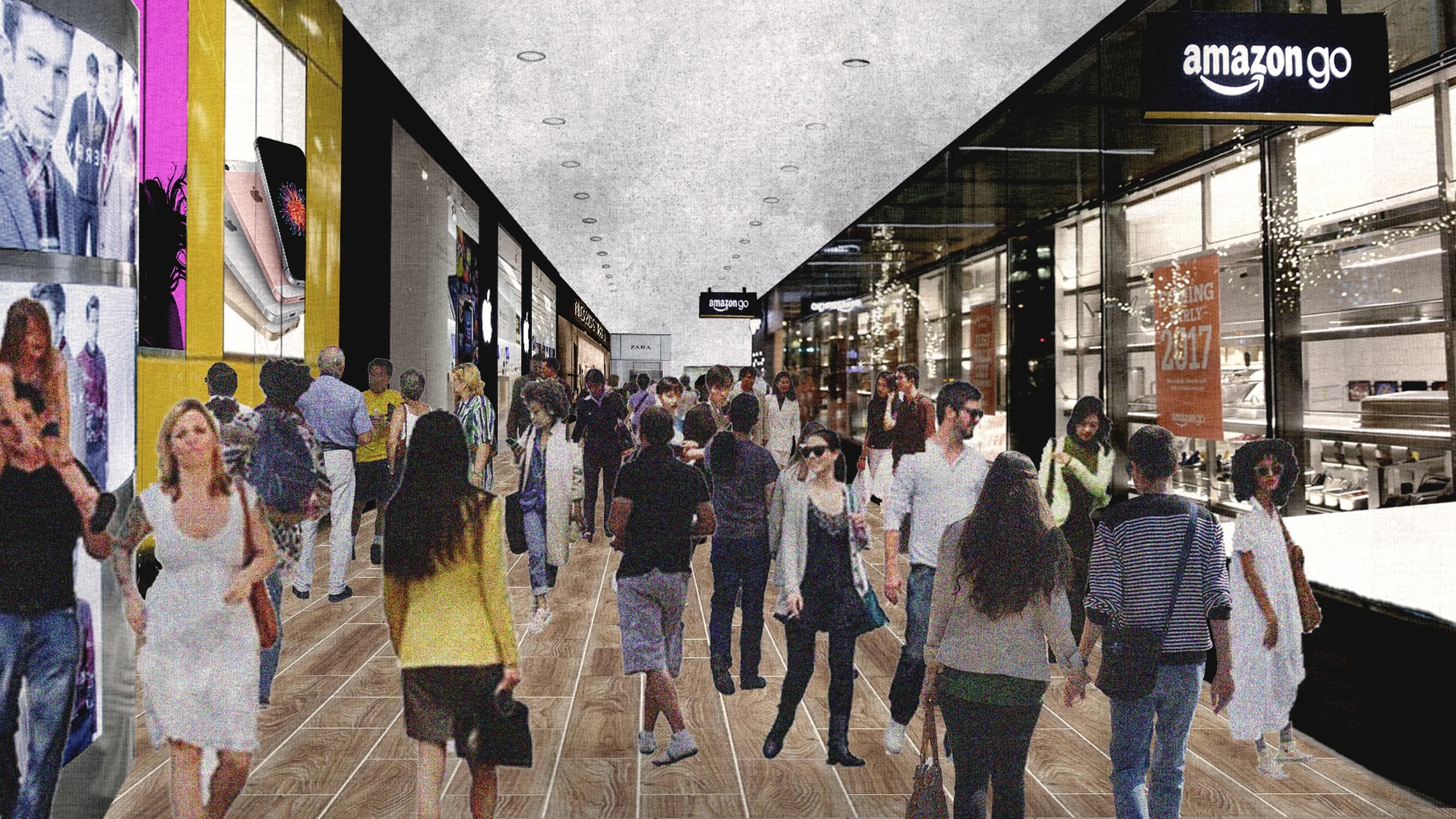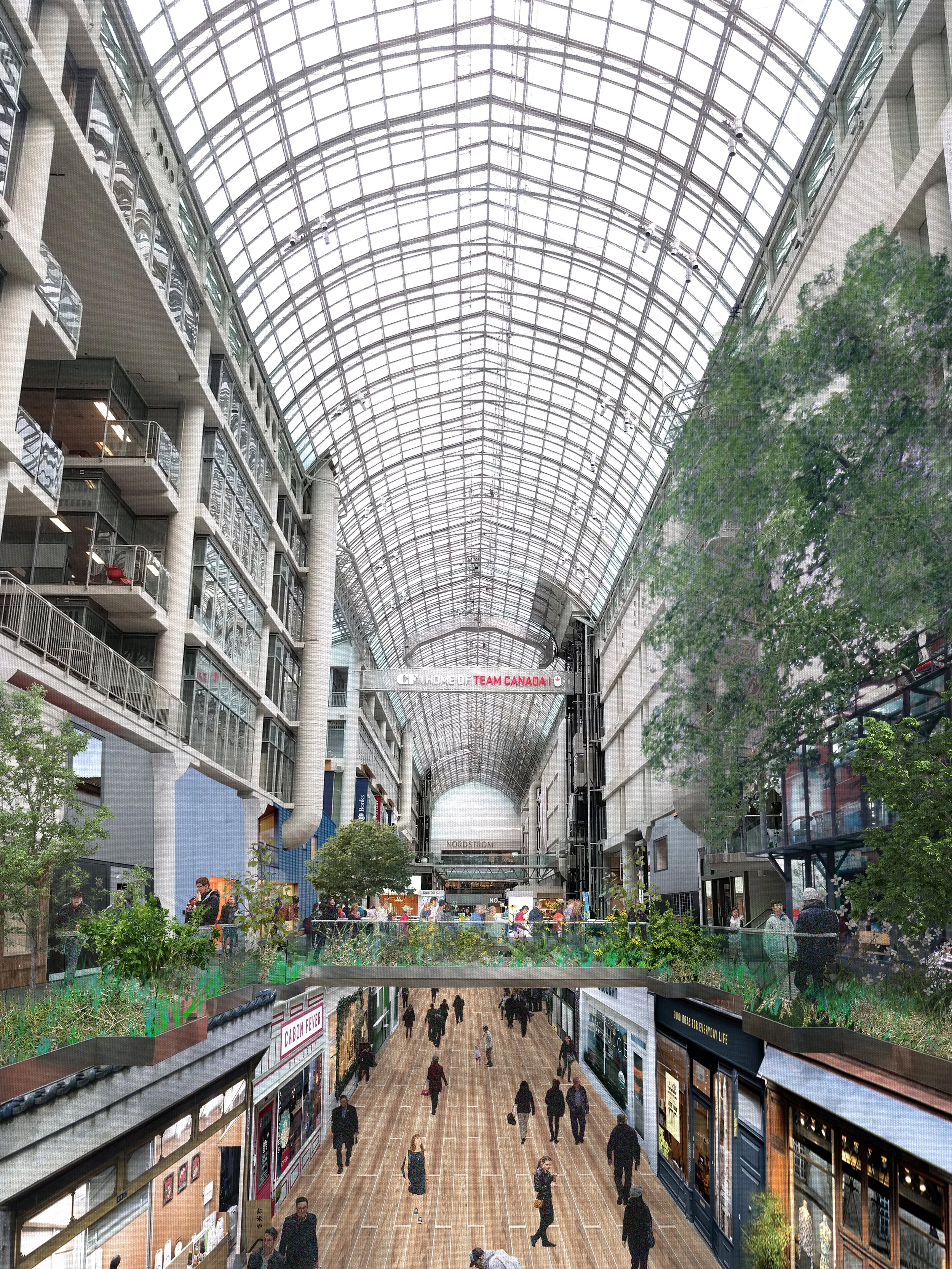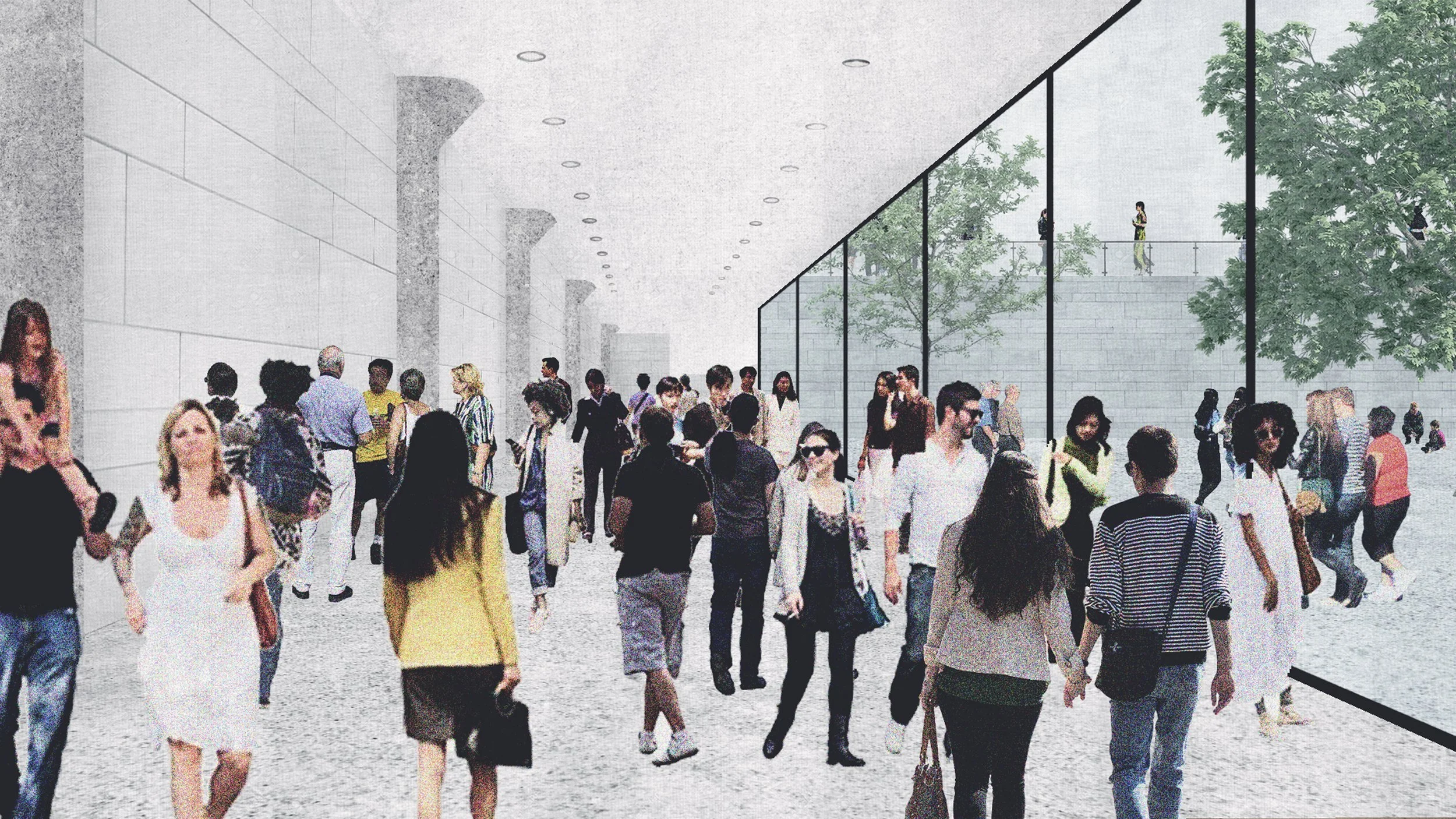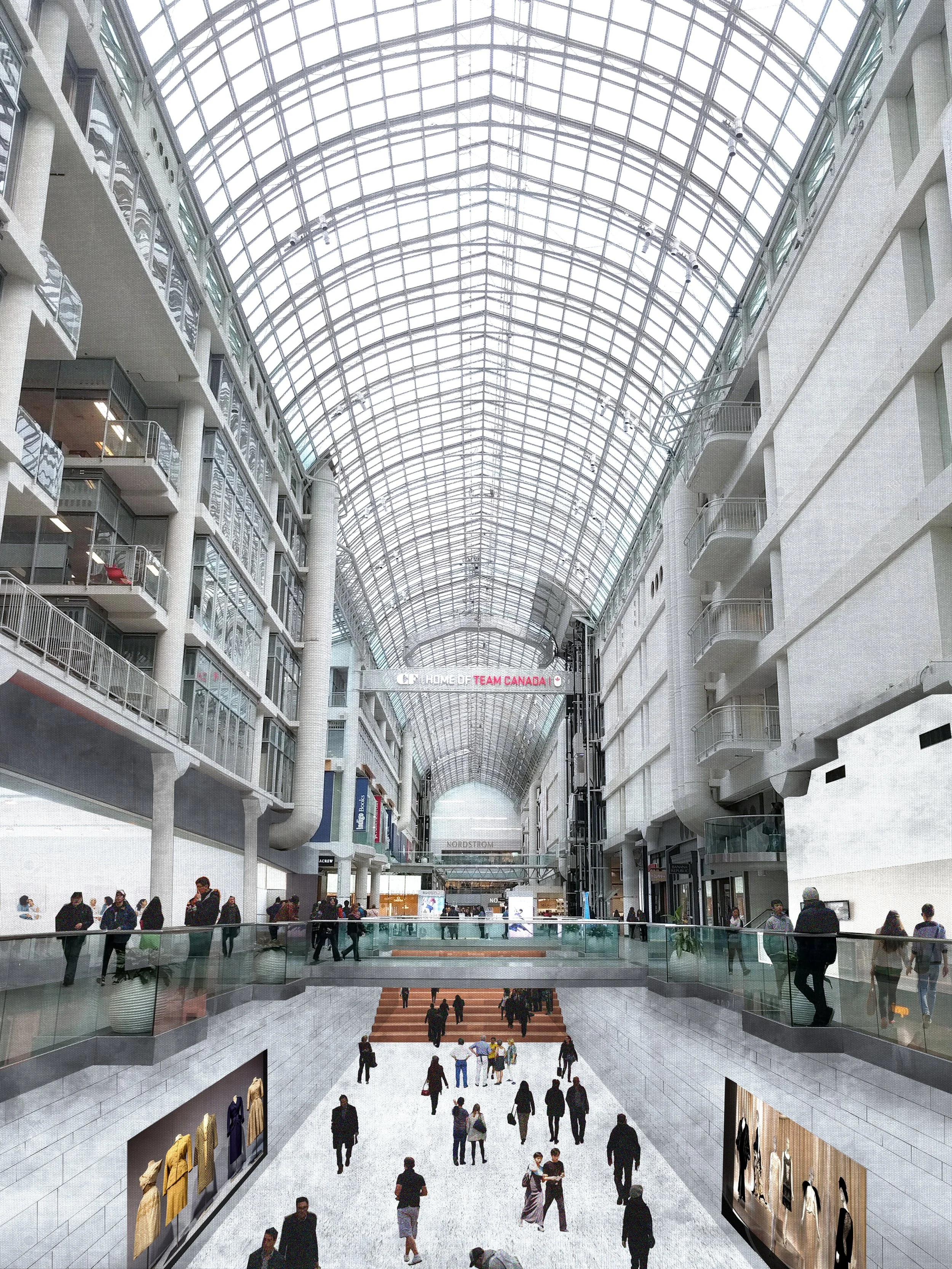speculative scenarios: toronto 2070
Through the lens of science fiction and inspired by ongoing advancements, the future of the Eaton Centre is envisioned in two distinct scenarios: utopia and dystopia. Technology, an inseparable part of modern life, has proven to be a double-edged sword that can either enhance urban living or lead to its collapse. The rise of automation, replacing human labor with machines that are faster, stronger, and cheaper, has already begun reshaping the workforce. By 2070, professions such as cashiers, drivers, factory workers, and even support staff may become obsolete. These changes set the stage for imagining how the Eaton Centre might evolve to adapt to a transformed society.
an urban village
In this scenario, Toronto in 2070 faces a population crisis driven by increased demand and expectations. Urban infrastructure, shaped by mass production and high consumption rates, has undergone drastic changes. The population, now largely composed of millennials and seniors, favors individuality and single-person households. The digitization of information empowers consumers, who navigate global online markets with ease, redefining urban lifestyles and housing demands.
The luxury of suburban living is accessible only to a privileged few, as automation makes many jobs obsolete, driving up the percentage of low-income households. With physical stores in decline due to dwindling traffic and online competition, shopping centers like the Eaton Centre must reinvent themselves. As space for new construction becomes scarce, the city turns to adapt outdated infrastructure to meet new demands. This includes transforming retail environments into mixed-use spaces that prioritize individuality, community, and affordable living.
The Eaton Centre becomes a hybrid of retail, residential, and entrepreneurial spaces. The first level continues to serve as a public transit corridor and a showcase for major brands. The second floor is dedicated to private businesses run by local entrepreneurs, while the upper levels house affordable residential units. The arcade evolves into a shared space for both shoppers and residents, offering a blend of public interaction and private refuge. This reimagined structure emphasizes sustainability, adaptability, and the preservation of individuality in an increasingly automated world.


a consumer museum
In this dystopian vision, by 2070 the once-thriving retail culture of Toronto has shifted entirely to digital platforms. Physical shopping becomes a relic of the past, leaving traditional retail spaces barren and the city’s retail infrastructure obsolete. In this digitized world, goods are manufactured in distant factories and delivered through seamless online systems. Raised in a digital-first environment, the population easily adapts to new products, controlling market trends with their online habits.
The Eaton Centre, like other dead malls, faces a choice: remain a hollow shell or find a new purpose. To preserve its historical and cultural significance, the site transforms into a consumer museum, paying homage to the era of physical retail. The first floor remains a transitional space for public transit users, guiding visitors toward a multi-level museum above. Exhibits celebrate the history of retail, showcasing products like cell phones, books, and clothing, offering a reflective experience of consumer culture.
The food court is repurposed into a cultural hub, encouraging social interaction, while the office spaces support museum staff and smaller private exhibits. Movable panels allow flexible layouts for exhibits, and the upper floors, including the office towers, are converted into affordable housing. This reimagined Eaton Centre serves as a living memory of the consumer era, blending historical reflection with contemporary urban needs.


